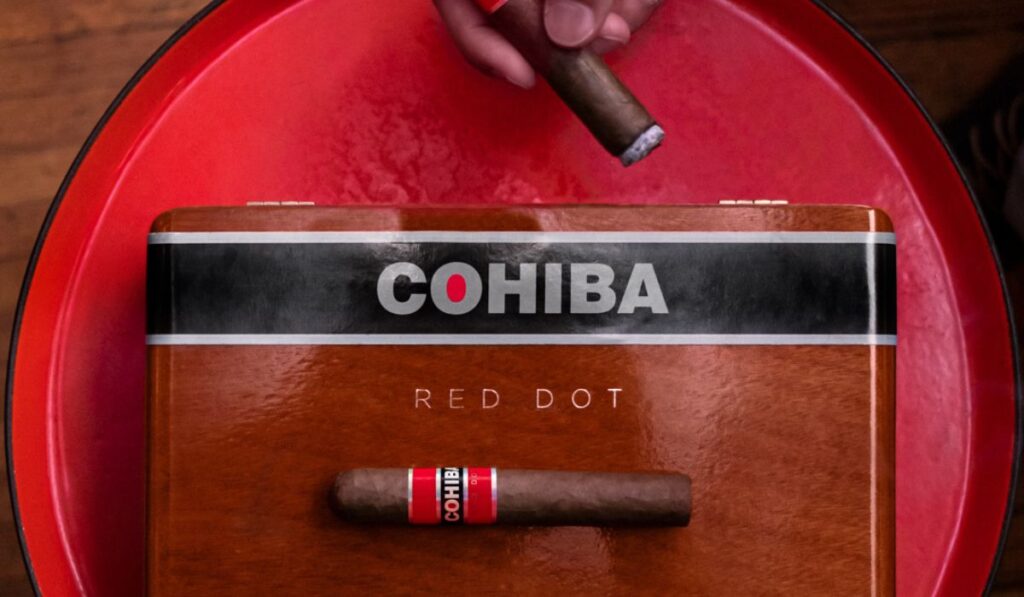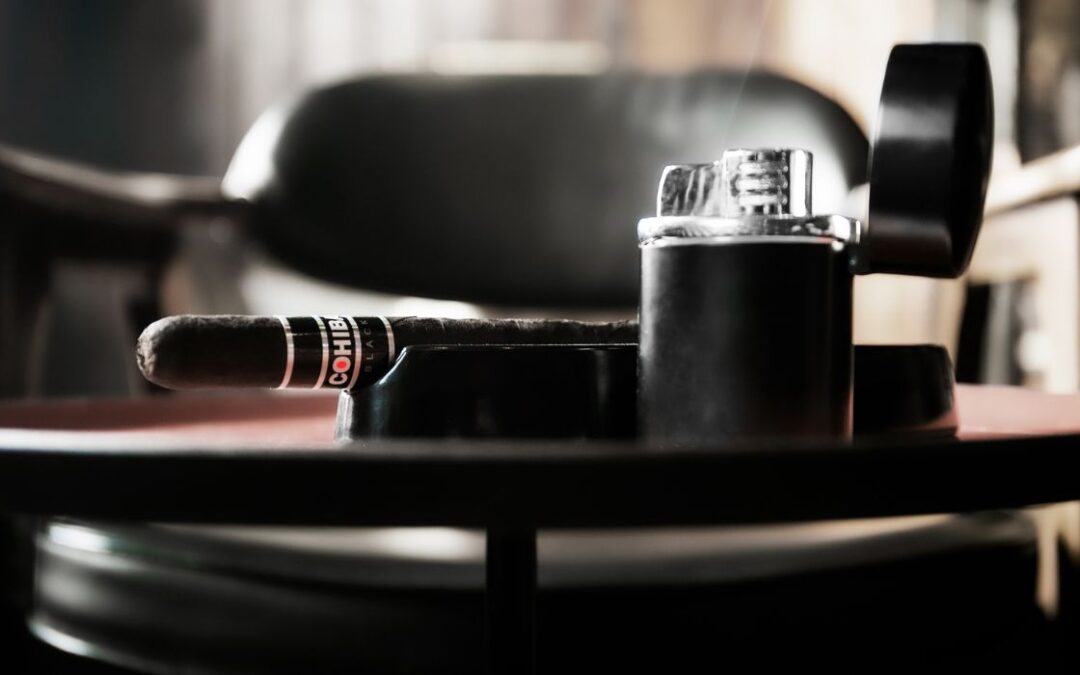
Cohiba went from being a private-label brand for Fidel Castro to become the world’s most recognizable and sought-after cigar in just a few decades. The Cohiba name is now synonymous with luxury goods, alongside Dom Pérignon vintage Champagne, Rolls Royces, and Patek Philippe watches, and for the most part, they live up to the hype.
In Cigar Aficionado blind tastings, Cuban Cohibas consistently perform well, and the Cohiba Behike BHK 52 was named Cigar of the Year in 2010. As far as trademarks go, Cohiba may be Cuba’s prize possession, and if you’re lucky enough to get your hands on a genuine one, it’ll most likely be the most expensive stogie in your humidor. But before you splurge on these pricey puros, here are some facts about this mysterious brand you should be aware of.
Cohiba Means Tobacco
Cohiba (Koh-HEE-bah) is the word for tobacco in Tano, the indigenous Arawak language of Cuba, before the Spanish conquest.
It is relatively new.
Cohiba is a relatively new Cuban cigar brand. It was explicitly created for Fidel Castro after the Revolution in 1966, so Cohiba has nothing to do with Old Havana but is quite symbolic of Castro’s Cuba and an icon of the Revolution itself.
Cohiba happened by chance.
According to legend, these cigars were made for Fidel Castro’s chief bodyguard. Castro fell in love with the smoke after trying it on a whim and ordered more, eventually making it his personal cigar. Many Cuban brands seen today were privately owned before the Revolution and then nationalized, but not Cohiba.
You couldn’t buy Cohiba with money.
For many years, the only way to obtain a Cohiba was from Castro himself. The cigars were given as diplomatic gifts to dignitaries, heads of state, and anyone else Castro thought deserving of such a fine smoke. The mysterious cigar was only available in one thin size at the time: the 7 1/2 inch by 38 ring gauge Lancero.
You Might Be Able to Purchase One Eventually
Cohibas were not commercially available until 1982, and even then, they were only available in Spain. The brand was available in three commercial sizes: Lancero (also known as Laguito No. 1), Corona Especial (also known as Laguito No. 2), and Panetela (also known as Laguito No. 3).
The larger cigars appeared in 1989 after Cohiba was introduced worldwide. Robusto, Esplendido, and the extremely small Exquisito were the new sizes.
Cohiba is available in four varieties.
The core line, officially known as Lnea Clásica; the Siglo Series, known as Lnea 1492; the Maduro Line, known as Maduro 5; and Behikes, known as the Cohiba Behike BHK Series, are Cuba’s most well-known brands. In 2010, the Behike BHK 52 was named Cigar Aficionado’s Cigar of the Year. As if Cohibas weren’t expensive enough, Behikes are even more so, as they are considered the absolute pinnacle of the Cohiba portfolio.
The Siglo Series was developed to fill a void.
If you weren’t aware, Davidoff began as a short-lived Cuban brand. What has this to do with Cohiba? After Davidoff’s production was relocated to the Dominican Republic, Cuba’s cigar industry responded with the Cohiba Siglo Series in 1992. The Siglo Series of cigars, officially known as Lnea 1492, matched some of the sizes previously found in the Davidoff line. For example, the former Davidoff Château Haut Brion is the same size as the Siglo I. The Château Margaux is mirrored in the Siglo II. Château Mouton-Rothschild, Siglo III. And the Siglo IV, as well as the Davidoff 5000. On the other hand, the Siglos V and VI were their own size.
El Laguito is Cohiba’s Mother Factory.

You won’t be able to miss it. El Laguito is a large yellow mansion in Havana’s leafy Miramar neighborhood dedicated to producing Cohiba cigars. The mansion was built by Alberto Casimiro Fowler, a Cuban industrial magnate, but it later became the Cohiba factory. The Cohiba logo is prominently displayed on the sweeping staircase wall and is visible as soon as you enter the foyer. However, El Laguito is one of many factories that produce Cohiba. Habanos has spread production to other factories to meet demand, but El Laguito is widely regarded as making the best Cohibas.
The Plantations Are Private
There are very few tobacco plantations in Cuba that produce tobacco distinct enough to be used for the Cohiba brand, and Habanos does not specify which farms make the cut. We know they’re in Pinar del Rio, but that’s about it. Some farmers may claim that their tobacco is used for Cohiba, but the truth is only possible to verify if you work for Habanos.
You’ve (most likely) Smoked a Fake
Rembrandts are imitated. Stradivarius violins are impersonated. Fake Louis Vuitton handbags exist. Petrus wines are forgeries. Furthermore, because Cohibas are a sought-after luxury item, they are counterfeited more than any other cigar brand worldwide. That is why you can buy fake Cohibas on the streets of Cuba and in souvenir shops on Caribbean beaches, just like you can purchase counterfeit handbags on Canal Street in New York City. Those Cohibas your son-in-law purchased on the beach in Cancun? Fake. So are the Cohibas obtained in Cuba by your so-called “connection” from people who allegedly work at the El Laguito factory and sneak them out the back door.
The Cohiba Name Is STILL Disputed
Do trademark laws apply when a trade embargo is imposed on the country that owns the trademark? It’s a never-ending lawsuit. Since General Cigar began selling Dominican Cohibas in the United States in the 1980s, there have been lawsuits, counter-lawsuits, appeals, numerous hearings, contradictory rulings, and decades of back-and-forth litigation. Officially known as Empresa Cubana del Tabaco v. Culbro Corp., the case is now pending before the USPTO’s Trademark Trial and Appeal Board. The courts are unable to reach an agreement.
The Band Design Has Changed Significantly
The design has evolved from simple dots and crude lettering to today’s technologically advanced, anti-counterfeit holograms. The bands have developed and evolved to the point where the early bands look almost nothing like the current ones. While older bands were relatively simple to imitate, each subsequent version became a little more sophisticated. Dots first became squares. The flat, black letters were then embossed with gold. Top-to-bottom holograms are now printed on the bands, making them more challenging to replicate.
It is the only commercially available Cuban with a 60-ring gauge.
Cohiba celebrated its 50th anniversary in 2016 with an expensive Elie Bleu humidor worth hundreds of thousands of dollars. There are 50 Cohiba and 50 Aniversario cigars in that humidor, each measuring 7 inches by 60 ring gauge. Cohiba came close in 2014 with the limited-edition Robusto Supremo at the 58-ring gauge, but the 50 Aniversario is the only commercially available Cuban cigar to reach a full 60-ring gauge.
There Are No Low-Cost Cuban Cohibas
Discount There are no Cohibas. Demand far outstrips supply, and Cohiba wholesale costs are too high for anyone to offer them at a lower price. If they’re cheaper than usual, they’re probably fake. Stop looking for a deal. Rather than wasting your time and energy trying to save money, look for a reputable dealer. It’s a self-delusion exercise that will only leave you burned and feeling foolish in retrospect.

